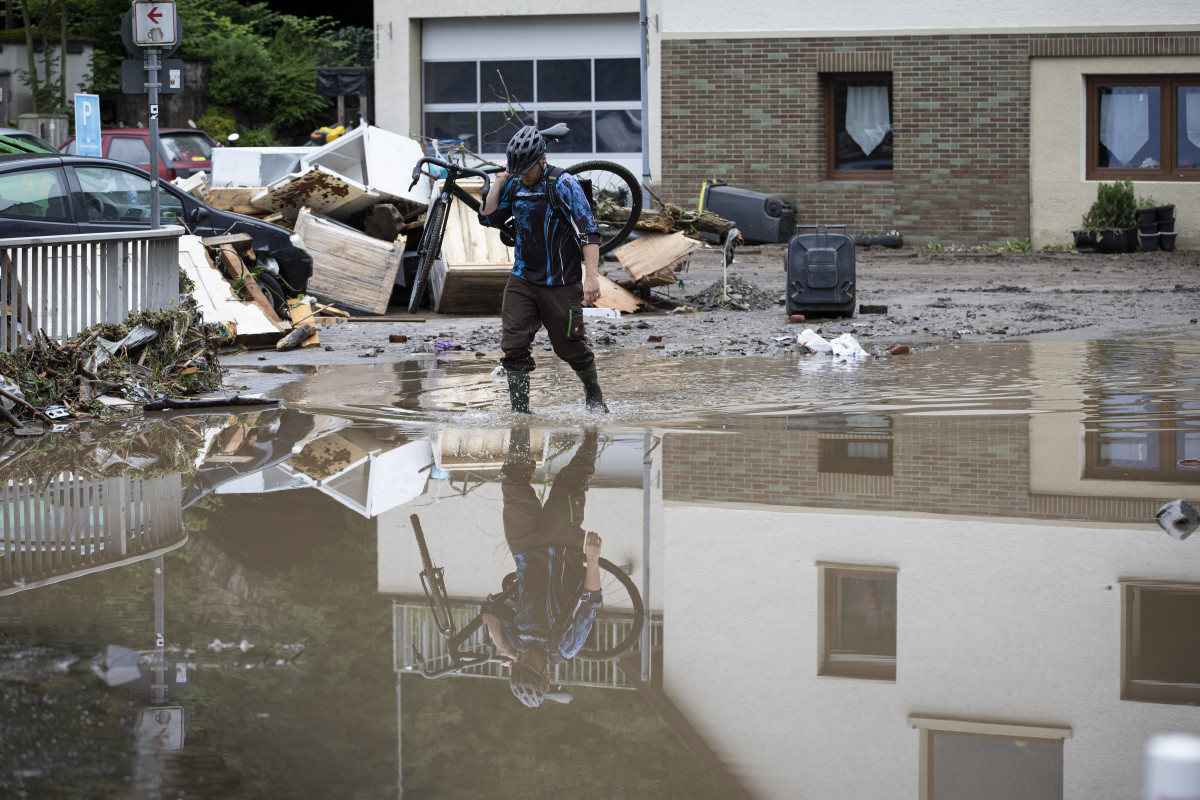Germany needs clear and mandatory guidelines for climate adaptation - analyst

Clean Energy Wire: Where are we at currently with climate adaptation in Germany?
Christian Kind: Climate change mitigation has been in focus since the early 90s, while the adaptation discussion started a lot later. It’s possible that decision makers and scientists were worried that talking about adaptation would mean admitting defeat in terms of mitigation – that it would reduce motivation to reduce greenhouse gas emissions. In the years around 2005 the national government started to take it into account and, in 2008, it published the adaptation strategy. Since then, many federal states have published adaptation plans and municipalities have followed suit. There has been action, especially in regards to gathering knowledge and creating strategies, but it has been very much on a voluntary basis. There are no laws or strong policy instruments that really enforce action on climate adaptation.
You have worked on the evaluation of the German adaptation strategy, which was published in 2019. What are the most important points of the strategy? Would you say it is ambitious enough?
It is a very general strategy which lays out that Germany has to adapt to climate change, that adaptation has to go in a way that encourages individuals – such as owners of buildings and properties – to take precautionary steps, that both the government and the federal states should take action, and that action should be taken in different fields, including agriculture, forestry, waterways and coastal protection. For each of these fields of action some direction is given in this strategy.
Whether enough is being done, is a question of priorities. The government has only so much money to spend. Do we spend it on climate mitigation, on adaptation? Or do we, for example, provide more daycare for kids or pay higher retirement benefits? What is needed is a public dialogue on the risks that we are willing to accept when it comes to climate change and the risks we definitely want to avoid. Based on this, we need to refine the action that we take. I feel like the flooding in western Germany this summer has pushed this debate a little. It has raised the question: are we willing to accept casualties and events like this, or are we willing to pay money to avoid them? A lot of money is currently being spent to rebuild this region, but of course in the long-term it’d be smarter to spend money ahead of time then to just pay for damages afterwards, which is always more expensive.
Sooner or later it is not going to make sense to rebuild in the same places where disasters struck and we need to change the way we live. We need to discuss what life under climate change can look like.
The strategic set-up for dealing with the impacts of climate change is good: we have a good knowledge base and different platforms for discussion, all the federal states have contact persons for the topic and talk with each other and the national government has a working group that deals with the topic. In terms of strategy, enough has been done - but I think more action is needed when it comes to creating clear and mandatory guidelines.
In terms of the floods that occurred last summer, how do you think the affected areas could have been better prepared for it?
For an event of this magnitude, warning is very important to get people out of harm’s way – and as we have gathered from the media this was not done well enough. More flood protection at some critical points in the riverbeds would have been beneficial, but such measures would have to be very massive to prevent the damages that we have seen. It would also cost a lot of money and change the landscape and some people will be opposed to that. So this really needs to be discussed: what risks are we willing to accept and who pays when the risk materializes?
It has been decided that almost all buildings that were affected by the floods will be rebuilt where they were before. That came as a surprised to me. I think we will see an ongoing discussion after every disaster about whether to rebuild or not. Sooner or later, depending on how things go in terms of mitigation, I think it is not going to make sense to rebuild in the same places where disasters struck and we need to change the way we live. We need to discuss what life under climate change can look like.
An event like a flood is often one that exceeds national borders. Is Germany cooperating with neighbouring countries or working on an EU level on this topic?
Regarding floods, Germany always looks towards the Netherlands. A country that has lived with water a lot longer and quite successfully, I think. There are some EU-funded projects along the river Rhine that focus on research and to a lesser extent on implementation of climate adaptation measures, where partners from the Netherlands, Germany and France work together on the issue. The European Environment Agency also connects different environmental agencies from across Europe to discuss what they are doing in terms of adaptation and to learn from each other – there is coordination and exchange of knowledge. The EU Commission also has a climate adaptation strategy and quite a bit of funding for research and implementation.
For the EU, however, climate adaptation is a bit of a difficult topic because it often concerns activities in the cities of the member states. The legislative instruments that the EU has for changing things on a city level are not very strong. The EU is, in some sense, a bit removed from where the action needs to be taken. For example, in the discussion on the Common Agricultural Policy and agricultural funding on the EU level, more incentives could have been included for farmers to use their land to provide benefits for adaptation – for example to decrease erosion and to increase the capacity of the land to retain water after a heavy rain event – but the EU left it to the member states to decide how they want to include such things in the incentive schemes. That was a missed opportunity.
The federal environment ministry recently founded the “Zentrum KlimaAnpassung“ (Climate Adaptation Centre), which is operated by the German Institute of Urban Affairs (Difu) and Adelphi. The centre provides counsel to municipalities on how to adapt to the changing climate. Do you think climate adaptation primarily needs to happen at a local level?
All levels – the federal, the state, the municipal – need to take action, and actions of different kinds. When it comes to municipalities it is about greening surfaces, measures to retain water, improving the local climate and making people aware of what they can do to deal with heat or heavy rain. The federal and national states need to provide the legal framework in which this is to be done. Climate change adaptation also needs to become a more mandatory thing to be taken into account when it comes to city planning. At the moment, the legal framework is not there for cities to include climate adaptation in their planning activities. When it comes to big property developments, many municipalities will be hesitant to say you cannot build here because it has detrimental effects on the future climate of the city, because their legal ground for this is often not solid enough.
The national government also needs to provide more funding for cities that are struggling economically already because it is difficult for them to finance infrastructure activities that are needed. Recently, the federal environmental agency (UBA) has called for adaptation to be a ‘Gemeinschaftsaufgabe’, which means it is handled at both the national and federal state level. Under the new government, adaptation should be a common task for the states and the national government, the UBA said, which would improve the legal framework for funding activities.
You mentioned earlier that, in the past, policy makers and scientists may have been reluctant to speak about adaptation out of fear that it would discourage climate mitigation efforts. Do you think this is still seen as a risk?
I think we are past that stage. We are already on the trajectory where we experience the impact of climate change. In the short-term, the amount of emissions that we will save will not change the impacts that we will see. So we need to adapt to what is going on already, that is inevitable. However, mitigation should still be the priority because we will see the results of any mitigation efforts taken now in 2040, 2050 and further in the future. It makes a world of difference whether we can limit global warming to 1.5 or 2 degrees, or whether we will reach 3.5 or even 4 degrees of warming. That really makes a big difference to our abilities to adapt to the resulting impact of climate change – the former would be a lot more manageable.


